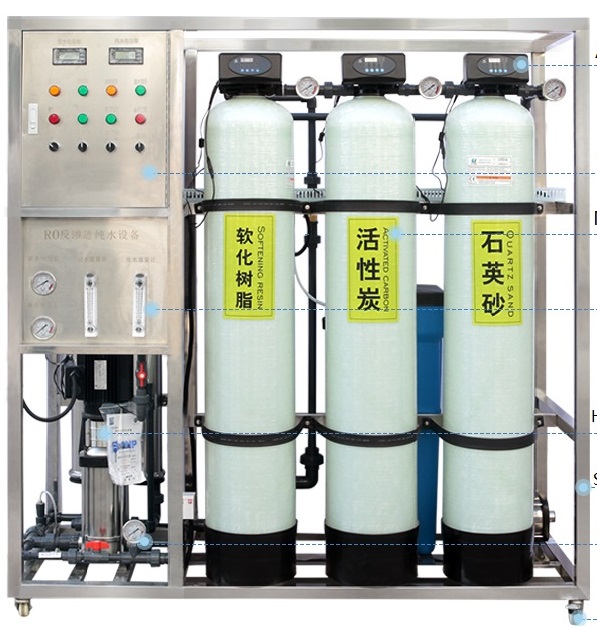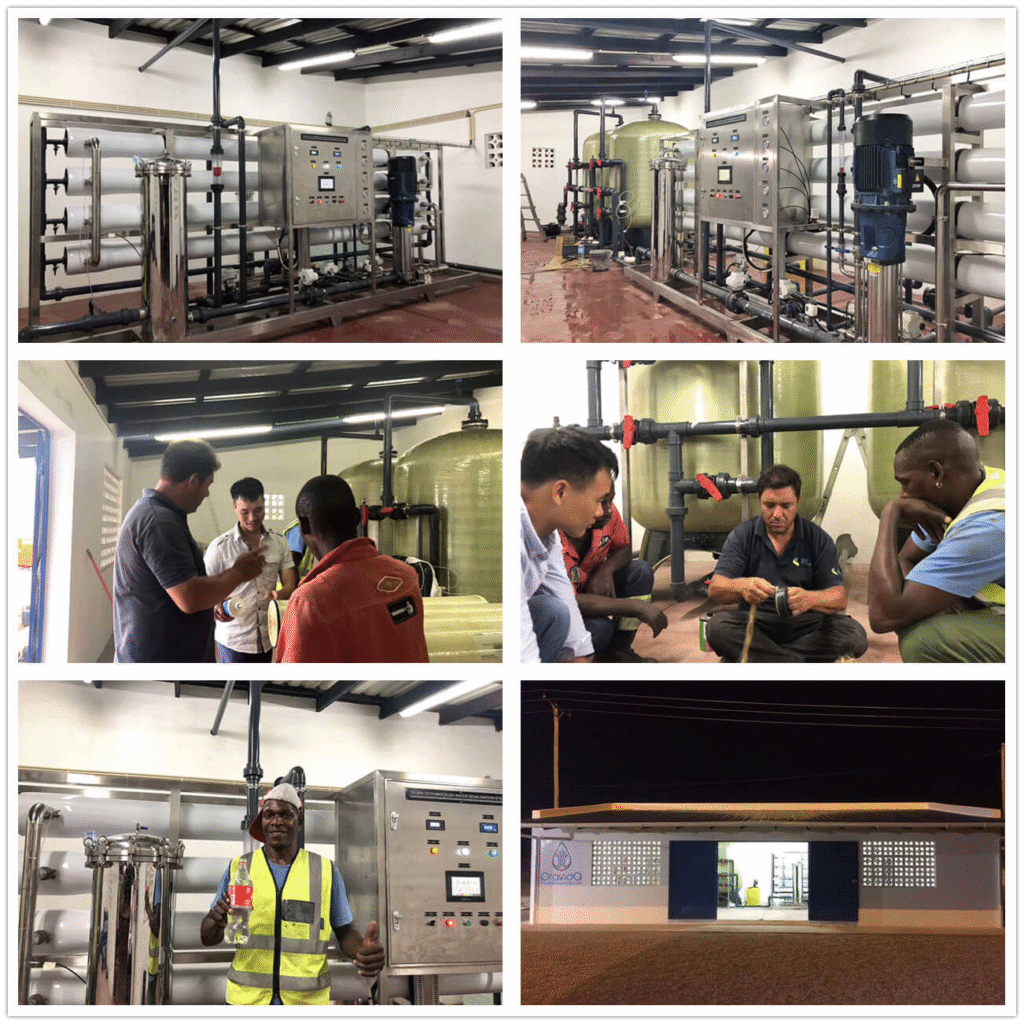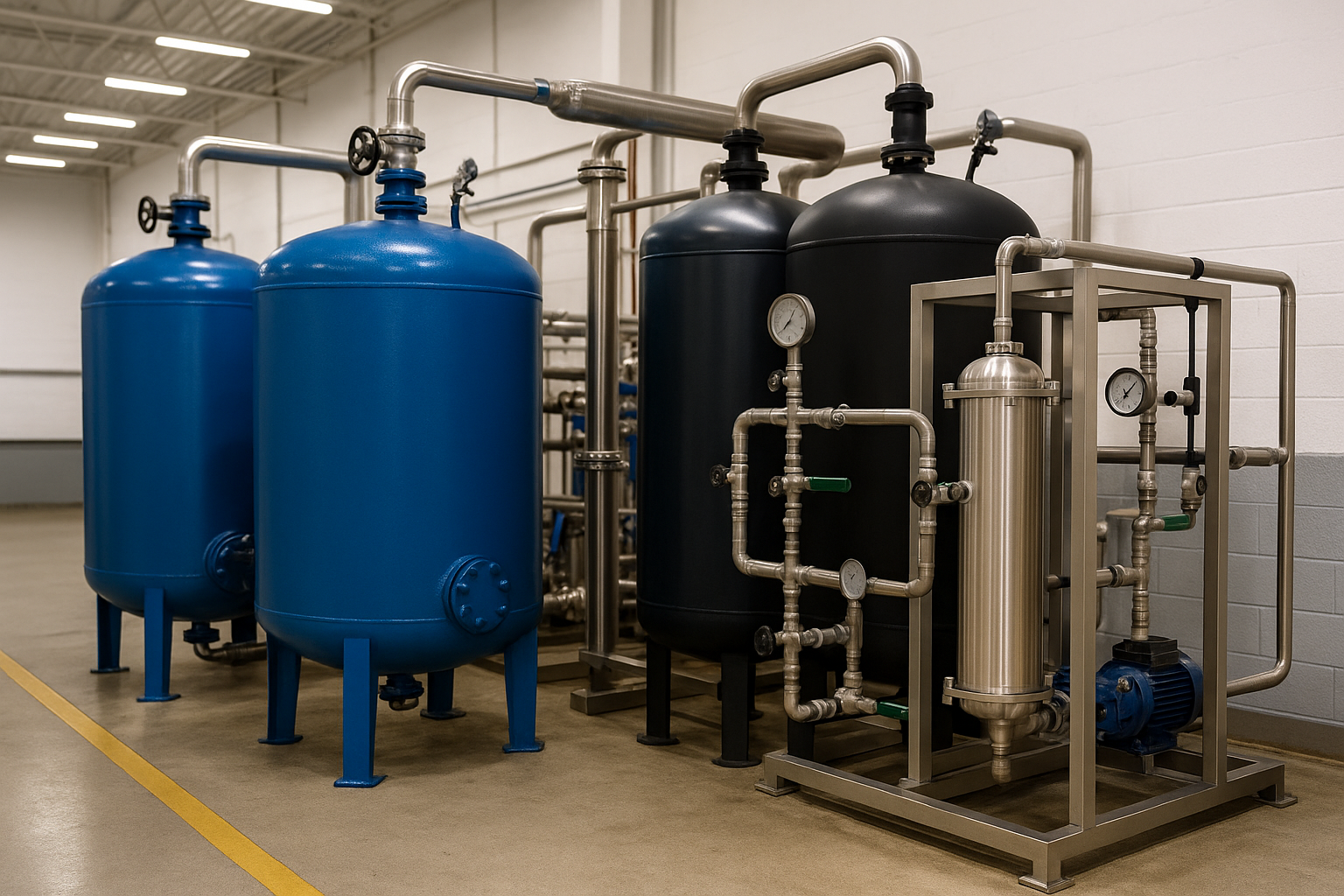Executive summary
Brackish water RO design targets <100 μS/cm at 1000 LPH by combining reliable feed characterization, pretreatment to SDI ≤3, realistic 55–70% recovery, and trend-based instrumentation.To deliver < 100 μS/cm consistently at 1000 LPH, anchor the design on: reliable feed characterization, pretreatment to SDI ≤ 3, realistic recovery (55–70%), and tight instrumentation with trend-based control. This article converts those principles into field-ready rules and checklists. A configured reference is available here once you’re scoping: 1000 LPH RO Water Treatment Solution

1) Brackish water RO design: a practical framework
- Product quality: < 100 μS/cm typical for brackish feeds up to ~3000 ppm TDS with correct pretreatment and set-points.
- Duty: confirm hours/day and days/month; this sets pump sizing and consumables cadence.
- Regulatory & hygiene: SS304 baseline; choose SS316L when chloride and hygiene exposure are high.
- Chemistry: dechlorination before polyamide membranes; antiscalant and occasional pH control sized to recovery and LSI/S&DSI.
- Start-up expectations: trend from Day-1; enforce interlocks to protect membranes (low pressure, high conductivity, ΔP).
2) Characterize the feed (no guessing)
Collect a 2–4 week snapshot across shifts or seasons: TDS, SDI, turbidity, pH, temperature, free chlorine, Fe/Mn, organics (if available).
- Temperature: colder water → higher viscosity → higher pressure for same flux; plan winter set-points.
- SDI: your most important fouling KPI before RO. Target SDI ≤ 3 at the RO inlet.
Consistent SDI control is the backbone of brackish water RO design.
3) Pretreatment rules to hit SDI ≤ 3
- MMF/AF sized for variable loads; backwash program matched to dirt load.
- UF when SDI > 3 or turbidity spikes: stabilizes flux, lowers cartridge consumption, extends membrane life.
- Dechlorination (A/C or SMBS) ahead of RO if any free chlorine is present.
- Cartridge 5 μm as the final barrier; size for duty and ΔP monitoring.
- Verification: log SDI and turbidity after each pretreatment stage during commissioning.
4) Core RO design window (1000 LPH)
- Membranes: typically 2 × 4040 polyamide; check element datasheets vs TDS/temperature.
- Recovery: 55–70% depending on scaling potential; match antiscalant to recovery.
- Pressure: usually 8–16 bar for brackish feeds; verify pump curve with winter temperature.
- Controls: continuous conductivity on feed/permeate; ΔP across RO; flow on feed/permeate/reject.
- Set-point discipline: avoid aggressive recovery on poor pretreatment; optimize on trend data, not on single-point readings.
Set-points should be tuned on trend data—this is central to brackish water RO design.
5) Instrumentation, trending and interlocks
Trend Cond-permeate, ΔP, normalized flux, temperature.
- CIP triggers: ΔP +15–20%, conductivity drift, or normalized flux loss.
- Interlocks: low feed pressure, high conductivity reject, tank high level, emergency stop.
- PLC/HMI: log and export 30–90 days; alarms require acknowledgment and root-cause notes.
6) Commissioning & SOP (1000 LPH)
- Flush pretreatment to clear fines and carbon dust.
- Ramp the HP pump with VFD; confirm ΔP and conductivity baselines at nominal recovery.
- Validate SDI ≤ 3 at the RO inlet; only then proceed to acceptance testing.
- Record a 7-day trend pack (CSV) to establish your “healthy” envelope.
7) O&M cadence (typical)
- Cartridge filters: weekly–monthly.
- UF backwash/CIP: per vendor, adjusted to turbidity seasonality.
- RO CIP: every 3–6 months on stable pretreatment; follow ΔP/conductivity triggers.
- Membrane life: ~2–3 years with correct pretreatment and operating window.
Over 2–3 years, disciplined brackish water RO design lowers CIP frequency and membrane spend.
For background on water-quality principles, see the
WHO Guidelines for Drinking-water Quality.
8) Troubleshooting quick table
- Permeate conductivity rising: check dechlorination, recovery too high, element damage, temperature shifts.
- ΔP increasing: fouling; verify pretreatment, SDI trending, cartridge loading; schedule CIP.
- Flux dropping suddenly: air ingress, pump/VFD issue, feed blockage.
- Cartridge life short: insufficient pretreatment or turbidity spikes; consider UF.
9) RFQ checklist (copy/paste)
- Latest TDS/SDI/temperature series (2–4 weeks)
- Target permeate conductivity and recovery
- Pretreatment scope (MMF/AF, UF if SDI>3, dechlorination, 5 μm cartridge)
- Materials (SS304/SS316L), utilities, noise
- Instrumentation (pressures, flows, conductivity), PLC/HMI and I/O list
- GA/Layout: footprint, nozzles, access, service clearance
- OPEX sheet assumptions (kWh/m³, chemicals, filter cadence, CIP)


